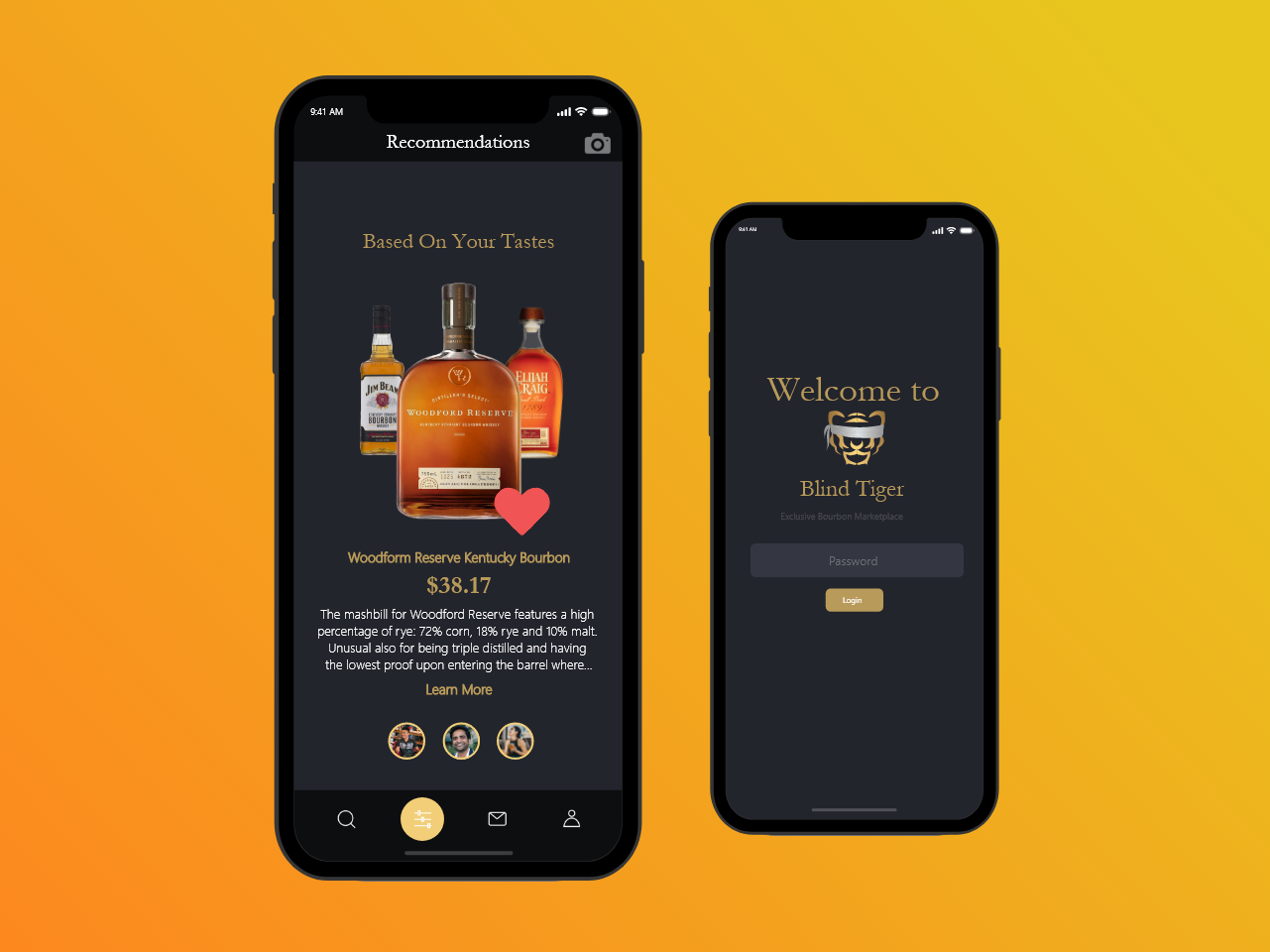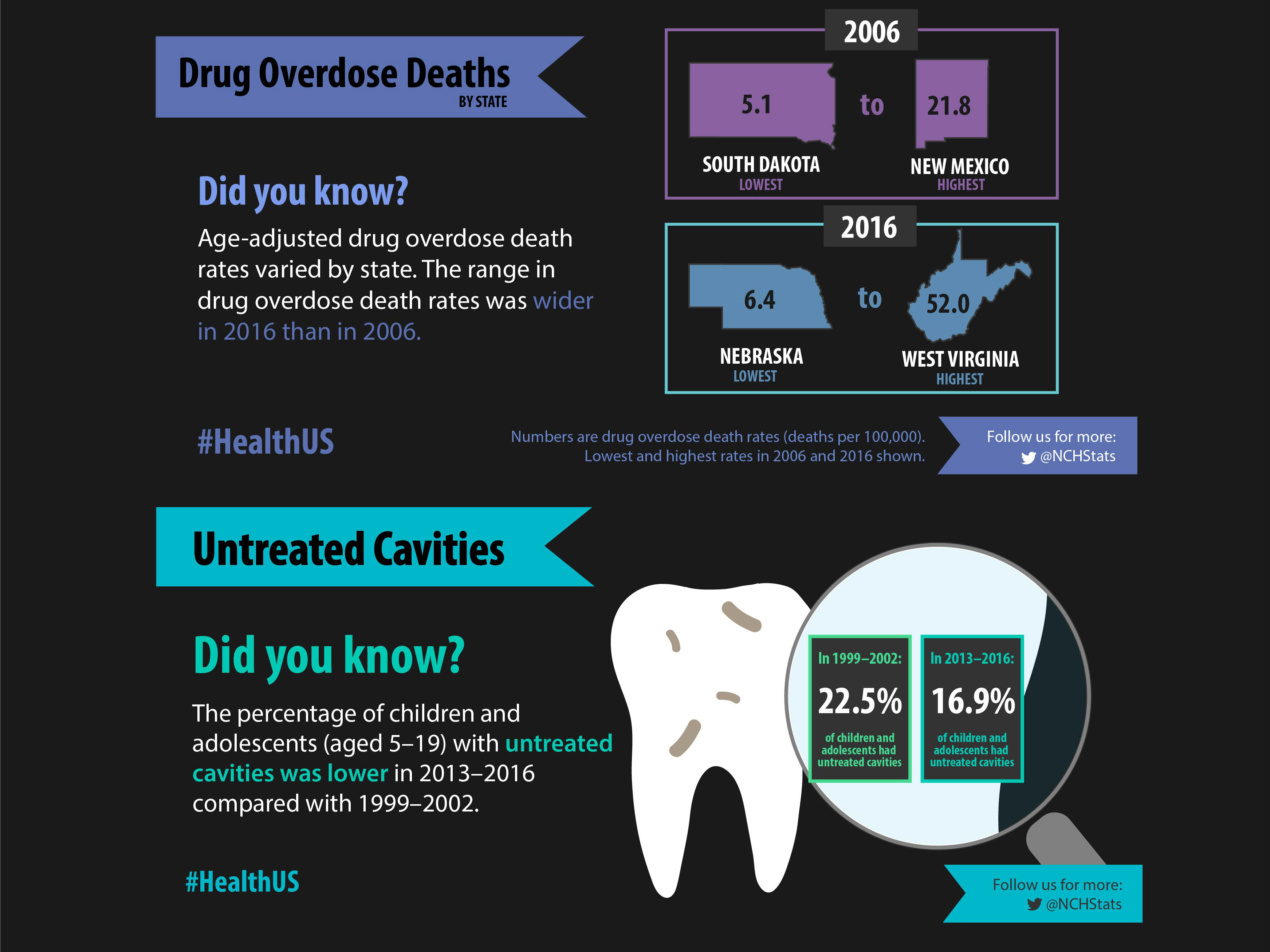Project Overview
As a part of a sociolinguistics research project, I chose to map the data I found on Twitter using Python Pandas
Introduction
Current literature has documented dialect patterns in regions of the U.S. and most notably, dialects in the U.S. incorporate very different forms of the plural ‘you’. Studies of regional dialects have traditionally been based on oral interviews. However, internet users have their conversations take place in an arena where they are exposed to much more variation than their local dialects. Twitter, an online news and social networking service, is an interesting venue to study online conversations. The public accessibility and pervasive use of Twitter supports thousands of virtual interactions from people all over the world. This project attempts to find correlations between slang used on Twitter and slang used as part of the regional dialects.
My Role
Python script writing, Pandas illustration of Tweet locations
Analysis
The data in this study was collected using the Twitter streaming API, which pulls a random sample of tweets that are publicly available in real time. Access to Twitter data in large quantities required me to have registered an application that allows me to pull hundreds of tweets along with their geographic location. Just as Twitter users can individually choose settings that make their tweets public/private, they may also choose to have their geographic location recorded when they tweet. Each of these tweets have a latitude and longitude recorded.
Since I was working with a large amount of data, about 1000 tweets per search, I wrote a program to search and decode these tweets rather than to access them through my own personal account. This way, the tweets being collected are public and unbiased by my own privacy and network settings. The Python script I wrote pulled all tweets containing a search phrase and compiled them. Below is a snippet of the main function that I used to find tweets using a certain phrase. The text following each ‘#’ is an explanation of the purpose that line of code serves to the program. The full program can be found on my Github.
Of these tweets, those with locations were filtered. Getting the tweets into a malleable form required the use of one more program, also available in online documentations. These latitude and longitude locations in an Excel workbook lent themselves to plotting using another program.
Although the Twitter stream has limits on the number of tweets I can access, the sampling is completely random. One problem that occurred was due to the way I wrote my tweet searching script, it filtered by locations before returning specific coordinates. In order to not analyze worldwide tweets, and rather ones in the U.S. I used a point and a radius to cover the U.S. This collected tweets from a large portion of Canada and the Pacific Ocean as well as the United States. However, I adjusted most of the ones that fell far outside the U.S. when processing the tweets. Using the locations of the tweets per phrase returned, I created a map that depicts the spread of tweets that use the selected phrases.
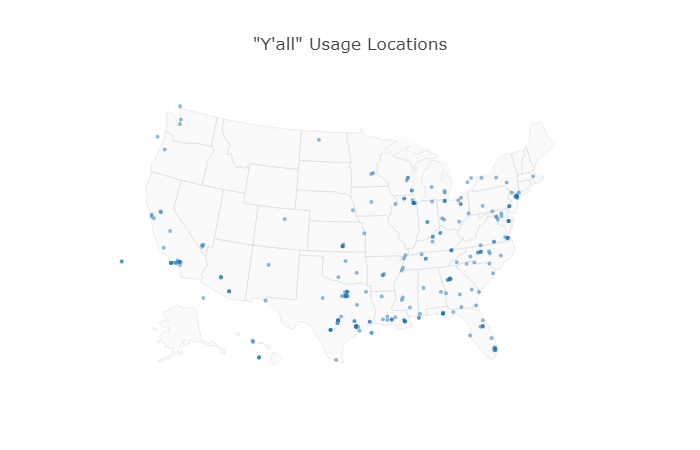
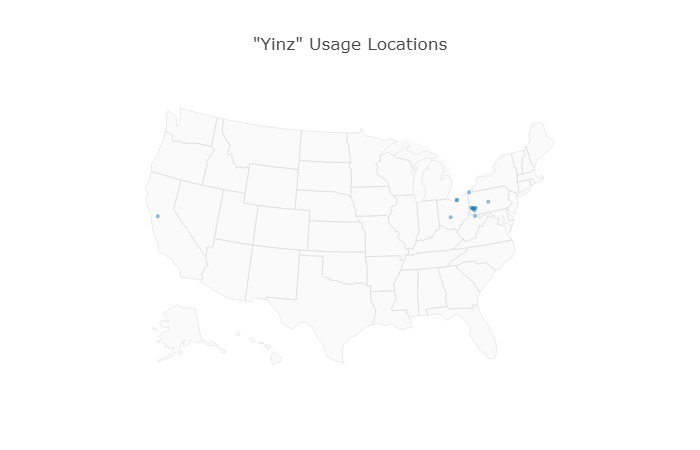
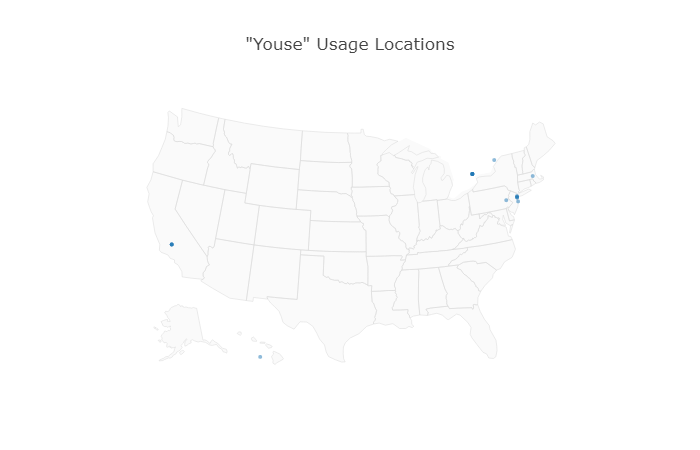
Takeaways
Even on the massive scale of the internet it seems that Twitter users generally remain within a certain microblogging community. For example, a Twitter user in Nevada would be unlikely to view tweets written in Chinese, unless they subscribed to a particular community of Chinese speakers. This supports my original hypothesis that regionalisms are preserved online. However, there is more to be explicated in the use of a typically “southern” term like ‘y’all’ so often in northern areas like New York City.
There are other possible reasons for the popularity of “y’all.” The easily communicable language trends on Twitter, such as the immediate adoption of new slang almost daily, might create a community more susceptible to language leveling. Mutual awareness in a social network has been found effective in discovering communities (Java 2007) The internet forms micro communities who not only communicate within the boundaries of a region, but also with popular internet culture such as memes. The use of specific language in the form of memes and easily retweetable content contributes to the prevalence of certain slang, such as y’all. Just as the sailors and young men in Labov’s Martha’s Vineyard study, the conscious use of “y’all” might be a marker of social identity on the internet. The use of AAVE and other pop culture references serve to fit in with internet culture as a whole. With language in a mutually intelligible and spread-able form, it does not take very long for words to become codified in internet lingo.
While a global network like Twitter, regionalisms are both preserved in the region of their origin as well as other places. Regionalisms like yinz and youse are preserved in their regions mainly due to the significant area identity associated with the terms. In contrast, a southern regionalism like y’all enjoys widespread use outside of its region of origin due to its ties to AAVE and pop culture. This suggests that multilingualism will be preserved on the internet as people continue to interact with people in their social network. This, is in addition to the popularisation of certain languages through meme culture, offers an interesting mix of languages on the internet. On a platform such as Twitter, users can choose what they want to consume, but the close network and global reach duality of internet culture will ensure the creation and spread of language unlike spoken forms.


